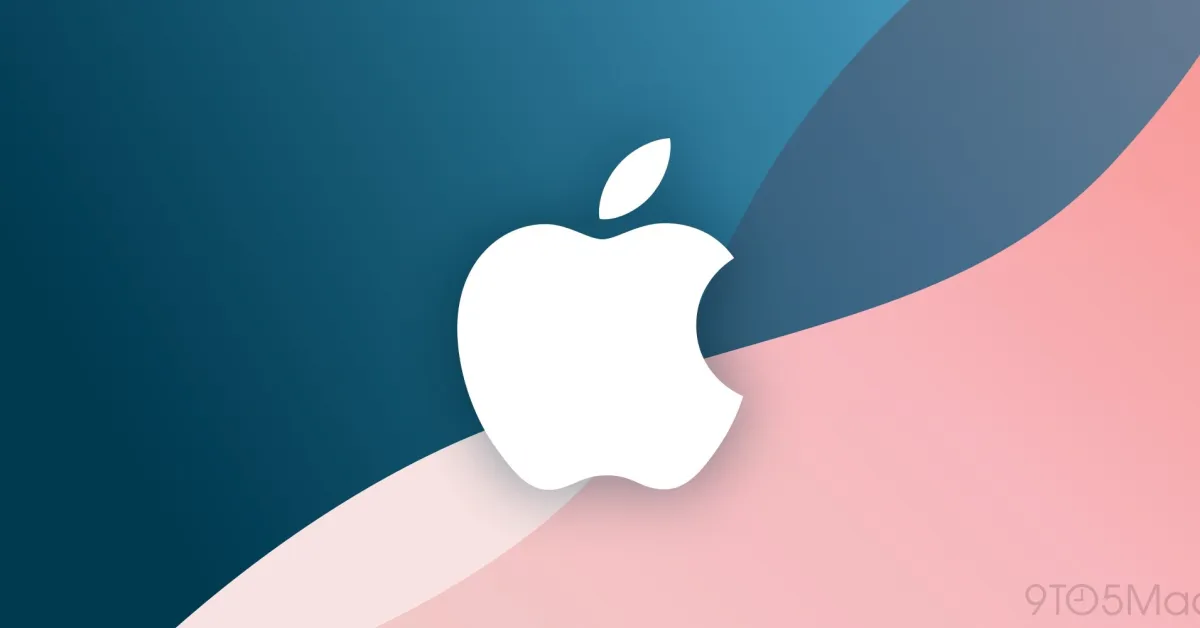Introduction to Apple Sign and Applemiller9to5mac
In the fast-paced digital age, where security breaches and data theft are rampant, the need for secure and efficient sign-in methods has never been more critical. As we browse the internet, create accounts, and log into various services, we expose ourselves to potential threats like phishing, hacking, and identity theft. Enter Apple Sign, a revolutionary feature introduced by Apple that allows users to sign in to apps and websites using their Apple ID. Apple Sign aims to simplify the sign-in process while ensuring user privacy and security are at the forefront. It eliminates the need for creating multiple passwords or sharing personal information, thus reducing vulnerability to cyber threats.
What makes Apple Sign even more impactful is the role of Applemiller9to5mac, a trusted and well-known platform that specializes in Apple-related news, updates, and technology insights. Applemiller9to5mac provides an extensive overview of Apple’s innovations, including Apple Sign, making it easier for both casual users and tech enthusiasts to understand and utilize this powerful feature. Throughout this article, we’ll dive into the workings of Apple Sign, how it compares to traditional login methods, its privacy features, and what we can expect from it in the future. But first, let’s break down what Apple Sign is and why it’s crucial in today’s digital world.
What is Apple Sign?
Apple Sign, also known as Sign in with Apple, is an authentication feature that enables users to log into apps and websites using their Apple ID, without the need to create new accounts or remember multiple passwords. Introduced in 2019 as part of Apple’s ongoing commitment to user privacy and security, this feature provides a streamlined and more secure way for individuals to access third-party services. When you choose to sign in with Apple, the app or website receives a unique, randomly generated ID, which is specific to that service. This ensures that even if one app is compromised, your information is protected because it isn’t shared across multiple platforms.
In addition to using your Apple ID, Apple Sign also incorporates advanced biometric security features, like Face ID and Touch ID, for authentication. This adds an extra layer of protection, as only you can authenticate the login. Apple Sign is also designed with privacy in mind. Unlike other social logins such as Facebook or Google, Apple does not track or profile your behavior when you sign into apps, and they don’t share your personal information with third-party developers unless you explicitly permit it. Moreover, you can choose to share your real email address or use Hide My Email, a feature that generates a random email address for the login, further safeguarding your identity. In this way, Apple Sign empowers users with control over their data, significantly reducing the risk of privacy invasion.
The Importance of Secure Sign-Ins
We live in a time where personal information has become one of the most valuable assets, and unfortunately, it’s often targeted by cybercriminals. Every day, millions of people are subject to data breaches, phishing attempts, and identity theft. The traditional method of creating individual accounts for every service comes with several risks. Password reuse is common because users find it difficult to remember multiple unique passwords for different platforms. This practice, however, leaves individuals vulnerable. If a hacker gains access to one password, they can potentially access multiple accounts across various platforms.
Apple recognized these risks and developed Apple Sign as a solution that simplifies the login process while dramatically enhancing security. By allowing users to authenticate through their Apple ID, the need for creating multiple accounts is eliminated. More importantly, Apple Sign’s robust security mechanisms—particularly the integration of biometric authentication—ensure that even if your Apple ID password is compromised, unauthorized access is still prevented without biometric verification. The privacy-first approach that Apple adopts also reduces the likelihood of your data being misused by third parties. Apple ensures that only the minimal amount of information required to log in is shared with the app or website, and in some cases, no personal data is shared at all. These security measures provide peace of mind for users who are concerned about their digital privacy.
The Role of Applemiller9to5mac
When it comes to understanding complex features and technologies, having a reliable source of information is crucial. This is where Applemiller9to5mac plays a pivotal role. As one of the leading platforms that cover all things Apple, from product launches to in-depth analyses of new features, Applemiller9to5mac has become a go-to resource for both tech enthusiasts and casual users. Their coverage of Apple Sign is no exception. With detailed guides, tutorials, and reviews, Applemiller9to5mac helps users navigate Apple’s ever-evolving ecosystem, ensuring that they are able to make the most out of features like Apple Sign.
Applemiller9to5mac not only breaks down how to use Apple Sign but also delves into its implications for user privacy and security. Their articles often provide real-world examples, user feedback, and developer insights, making complex technologies easier to understand. Whether you’re someone who is already familiar with Apple’s services or a newcomer who is looking to enhance your digital security, Applemiller9to5mac offers valuable insights that help you navigate the world of Apple with ease. By staying up-to-date with the latest Apple developments, the platform ensures that you are always informed about new updates, potential security risks, and ways to optimize your use of Apple Sign.
Why Apple Sign is Gaining Popularity
It’s no secret that Apple Sign is rapidly gaining popularity, and it’s not hard to see why. As more and more users become aware of the importance of online security and privacy, they are turning to Apple Sign as a reliable alternative to traditional login methods. First and foremost, the convenience it offers is unparalleled. With Apple Sign, users no longer need to fill out long registration forms or remember a host of different passwords. Instead, they can authenticate their identity with just a tap, using their Apple ID credentials.
Another major reason for its rising popularity is its enhanced security features. Apple has always been known for prioritizing user privacy, and Apple Sign takes this commitment to the next level. By offering features like Hide My Email and the option to generate random email addresses for each login, Apple ensures that users can protect their personal information without sacrificing convenience. Furthermore, developers are required to offer Apple Sign if they provide other third-party login options like Google or Facebook, which has also contributed to its widespread adoption. With Apple’s vast user base and reputation for security, it’s no wonder that more people are choosing to use Apple Sign as their preferred login method.
How Apple Sign Works: A Step-by-Step Guide
For those unfamiliar with how Apple Sign works, it may seem like a complicated process, but in reality, it’s incredibly straightforward. Here’s a step-by-step breakdown of how you can use Apple Sign to log into apps and websites:
- When prompted to log in or create an account, select Sign in with Apple from the list of options.
- You’ll then be asked to authenticate your identity using either Face ID, Touch ID, or your Apple ID password, depending on the device you’re using.
- After authentication, you’ll be given the option to share your real email address or use Hide My Email, which generates a random, unique email address for that particular app or website.
- Once you’ve made your selection, Apple will generate a unique identifier for the service you’re signing into, ensuring that your information cannot be used across multiple platforms.
- Congratulations—you’re securely logged in! The next time you visit the app or website, you can log in using Apple Sign with just a tap.
This process is designed to be as simple and user-friendly as possible, eliminating the need for cumbersome registration forms or remembering different passwords. And because Apple handles the authentication process, you can be sure that your data is being protected at all times.
Advantages of Using Apple Sign Over Traditional Sign-Ins
While there are many ways to sign in to apps and websites, Apple Sign stands out for a variety of reasons. One of the key advantages is its emphasis on privacy. Unlike traditional sign-in methods, which often require users to share personal information like their email address, phone number, or social media profiles, Apple Sign allows you to keep this information private. With the Hide My Email feature, you can create a unique email address for each app or website, meaning that even if one of these services is compromised, your real email address remains secure.
Another major advantage of Apple Sign is its integration with biometric authentication. Whether you’re using Face ID or Touch ID, Apple Sign adds an extra layer of security by ensuring that only you can authenticate the login. This is a significant improvement over traditional sign-in methods, which often rely on passwords that can be easily guessed or stolen. Additionally, Apple Sign eliminates the need for users to remember multiple passwords, as all logins are managed through their Apple ID. This not only saves time but also reduces the risk of password-related security breaches, which are all too common with traditional sign-ins.
Privacy Features in Apple Sign
When it comes to privacy, Apple Sign is a game-changer. One of its most notable features is Hide My Email, which allows users to create unique, random email addresses for each service they sign up for. This means that even if an app or website suffers a data breach, your real email address remains protected. Apple will forward any emails sent to the random address to your actual inbox, ensuring that you never miss important communications, but you can easily disable the random email address at any time if you start receiving unwanted spam.
In addition to Hide My Email, Apple Sign also takes a minimalist approach to data sharing. Unlike other sign-in methods that may require you to share personal details like your name, phone number, or address, Apple Sign only asks for the information that is absolutely necessary. And in most cases, this is limited to just your email address (which, as we’ve seen, can be randomized for added privacy). Apple also promises that it does not track your activity or create profiles based on your app usage, so you can rest assured that your personal information is not being used for targeted ads or sold to third-party companies.
Why Developers Must Include Apple Sign
Apple has made it mandatory for developers to offer Apple Sign as an option if they provide other third-party login options like Google or Facebook. This ensures that users have the choice to log in with a service that prioritizes their privacy. For developers, integrating Apple Sign can be a relatively simple process, and it provides them with the opportunity to appeal to a larger audience—particularly those who are concerned about privacy and security.
Furthermore, Apple Sign offers a more streamlined user experience, which can lead to higher engagement and retention rates. Because users don’t need to create new accounts or remember multiple passwords, they are more likely to complete the sign-up process and return to the app or website in the future. For developers who are looking to build trust with their users, offering Apple Sign is a no-brainer.
Common Misconceptions About Apple Sign
Despite its many advantages, there are still some misconceptions about Apple Sign that prevent people from using it. One of the most common myths is that Apple Sign is only for Apple users. While it’s true that you need an Apple ID to use the service, it’s worth noting that Apple Sign can be used across a wide variety of platforms, including Android and Windows. This means that even if you’re not fully entrenched in the Apple ecosystem, you can still take advantage of the service’s security and privacy features.
Another misconception is that using Apple Sign means giving up control over your personal data. In reality, Apple Sign offers more control over your data than most other sign-in methods. With the ability to hide your email address and limit the amount of information shared with apps and websites, you have far more control over your digital footprint than you would with traditional sign-in methods.
Conclusion
In a world where privacy is constantly under threat, Apple Sign represents a major step forward in terms of both convenience and security. By offering a secure, streamlined sign-in process that prioritizes user privacy, Apple is setting a new standard for how we log into apps and websites. Whether you’re a casual user who wants to simplify your login process or a privacy-conscious individual looking for the most secure way to access your favorite services, Apple Sign is an invaluable tool that can enhance your digital experience. And with Applemiller9to5mac providing comprehensive coverage of all things Apple, you can stay informed about the latest developments and make the most of this innovative feature.
FAQs About Apple Sign and Applemiller9to5mac
Can I use Apple Sign on non-Apple devices?
- Yes! While you need an Apple ID to use Apple Sign, the service can be accessed on various platforms, including Android and Windows, making it versatile across different devices.
What is Hide My Email in Apple Sign?
- Hide My Email is a privacy feature that allows you to generate a random email address when signing up for apps or websites, ensuring that your real email remains private.
Does Apple Sign track my app usage?
- No, Apple does not track your app usage or create profiles based on your sign-ins. This ensures that your personal data is not used for targeted ads or sold to third parties.
How does Apple Sign enhance security?
- Apple Sign integrates biometric authentication, like Face ID and Touch ID, to ensure that only you can authorize logins, adding an extra layer of security beyond just passwords.
Why do developers need to offer Apple Sign?
- Apple requires developers to offer Apple Sign if they provide other third-party login options, ensuring that users have a choice to log in with a service that prioritizes privacy and security.




